#creation hawaii
Text
Rob Benedict and Richard Speight Jr at Creation Con Hawaii!
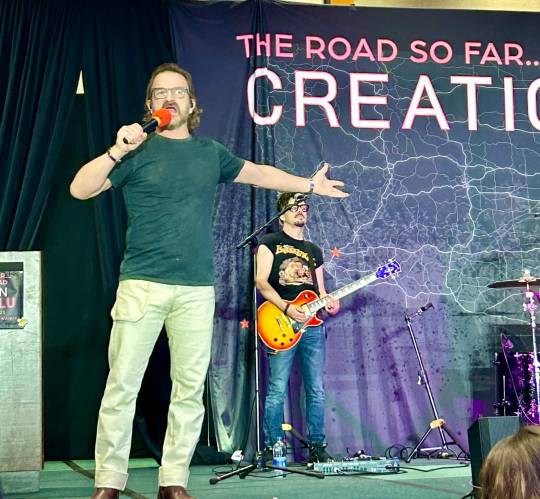
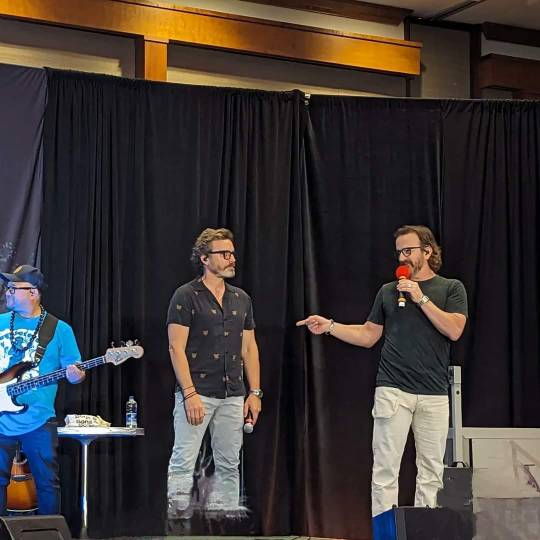
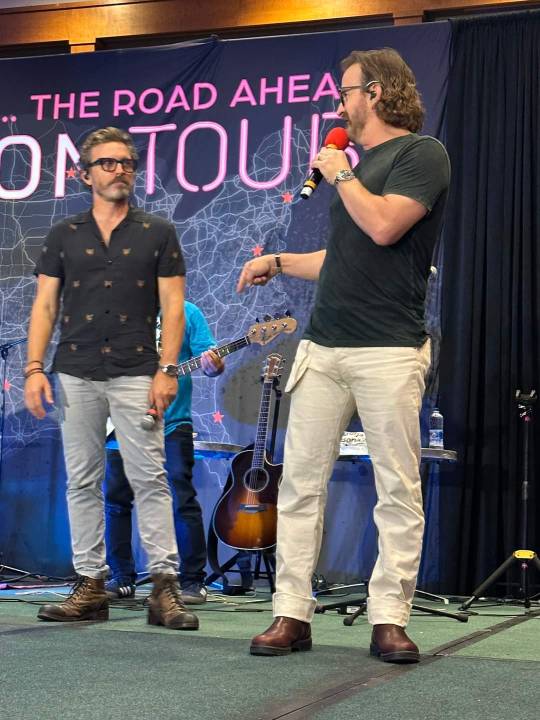


#richard speight jr#rob benedict#louden swain#billy moran#michael borja#stephen norton#creation conventions#creation hawaii#rob & rich#look like the day's about to start#time is different here in the uk#can't wait to see more photos!#especially photo ops#wish i was there 😢#supernatural
5 notes
·
View notes
Text
Selling pass and extra for the Supernatural convention happening in Hawaii in November
For a few reasons I can't make it to Creation Hawaii Con in November so I am selling my pass and extras.
I have available
Gold Pass Seat F 37: $1000
PJ Party: $190
Trio photo: $349
Jensen and Misha Photo: $220
Payment via paypal. DM me
0 notes
Text

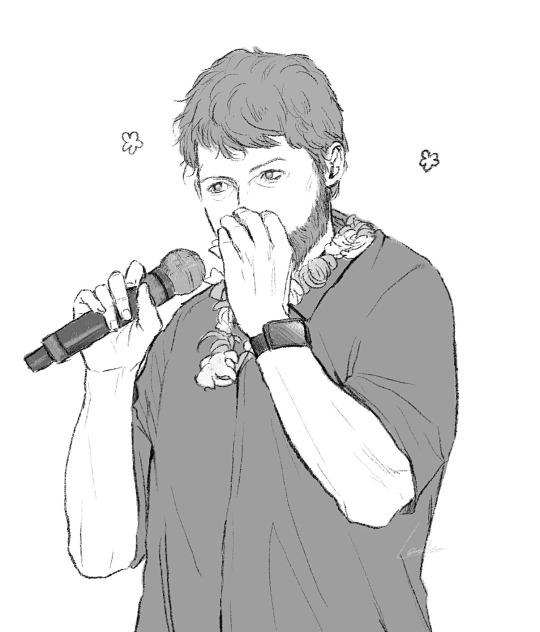
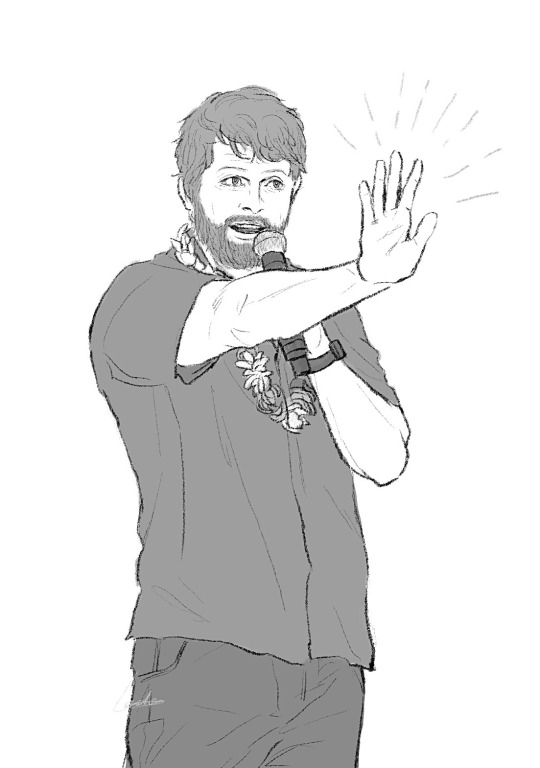
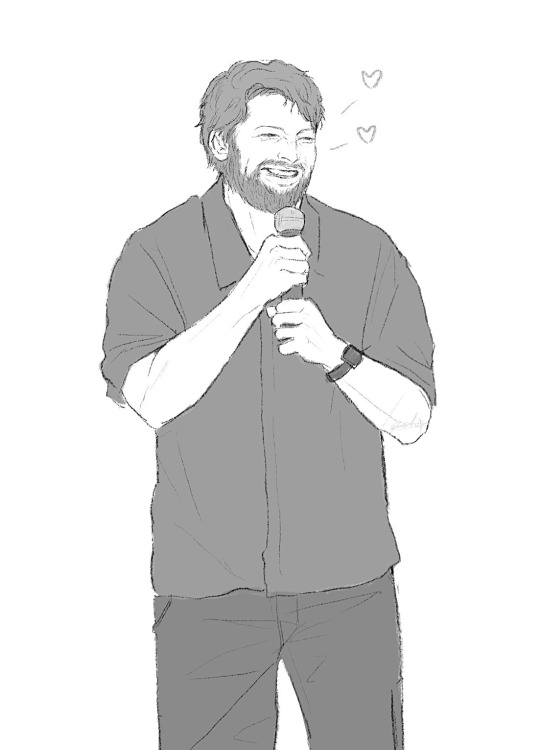
misha in Hawaii sketch✍️
154 notes
·
View notes
Text
Hey guys. I'm unable to attend Creation's convention in Honolulu, Hawaii in November. I have a gold weekend ticket to sell (with a fantastic seat) and a J2 op. If anyone is interested, please message me. Signal boosts/reblogs are greatly appreciated.
-Gold ticket seat D42: $1,100
-J2 op: $350
#jared padalecki#jensen ackles#misha collins#j2#honolulu#hawaii#creation entertainment#supernatural#walker
55 notes
·
View notes
Text
👩🏽💻 📝 🔗 New post via my personal blog. ✌️ 🤙
#my own post#my own writing#my own thoughts#personal#my own words#my writing#my own creation#life update#Pray for Hawaii#Prayers for Hawaii#Hawaii#Pray for Maui
2 notes
·
View notes
Text
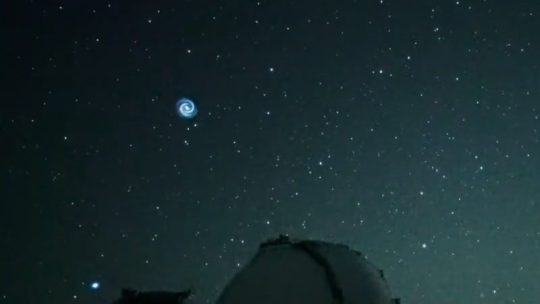
mysterious spiral that the Subaru-Asahi Star Camera captured above Mauna Kea, Hawaii, on January 18, 2023? It was most likely a new SpaceX satellite launched earlier that day - https://earthsky.org/space/astronomers-spy-mysterious-spiral-over-hawaii/
#spiral#hawaii#Subaru-Asahi Star Camera#earthsky#mysterious spiral#nature#astronomy#universe#space#sky#natures#godscreation#god's creation
3 notes
·
View notes
Photo

11 “This is what the Lord says—
the Holy One of Israel, and its Maker:
Concerning things to come,
do you question me about my children,
or give me orders about the work of my hands?
12 It is I who made the earth
and created mankind on it.
My own hands stretched out the heavens;
I marshaled their starry hosts.
--Isaiah 45:11-12
Photo: Kauai, Hawaii
#hawaii#kauai#holy bible#bible verses#holy scripture#sunset#ocean#hawaiian islands#isalah#isalah 45#inspiration#god's creation#god's power#anxiety#pacific ocean#pacific islands#polynesia#ocean sunset#travel#tourism#adventure#explore#nature#honeymoon#vacation#romantic getaway
3 notes
·
View notes
Text
PROJ: HwII333File# 55434.lv"_M|r@cl€_"
PROJ: HwII333File# 55434.lv”_M|r@cl€_”
PROJ: HwII333File# 55434.lv“_M|r@cl€_”🎶All my, all my lifeI’ve been prayingI’ve been waiting for a signChasing heavenBut I’m never satisfiedNeed a deeper meaningSomething to believe inLet me tell you, you know II need a miracle, I need a miracleIt’s more than physical what I needTo get me through…🎶#psyworks #believe #miracle #vlad #turtle #seaturtle #snorkeling #oceanlife #marinelife #universe…
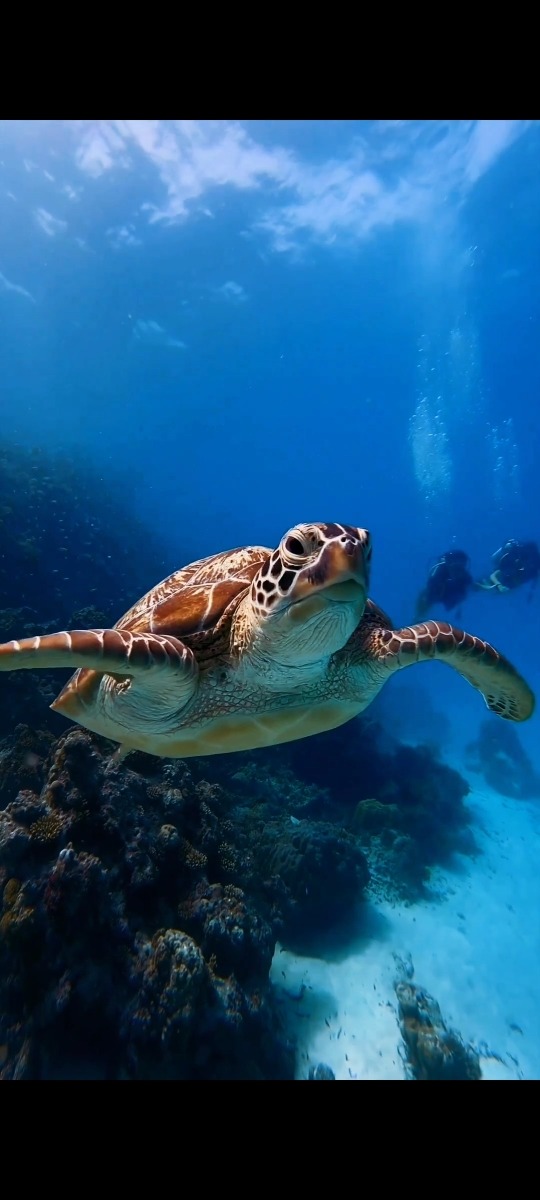
View On WordPress
#Psyworks wmagazine ellemagazine harpersbazaar vogueitalia galgadot emiliaclarke nataliavodianova fashionbloger fashionmagazine in#acraze#all my life I&039;ve been praying I&039;ve been waiting for a sign Chasing heaven But I&039;m never satisfied Need a deeper meaning Somet#believe#coral reefs#EDM#goodboys#Hawaii#I need a miracle It&039;s more than physical what I need To get me through...🎶 psyworks believe miracle vlad turtle seaturtle snorke#maui#miracle#mother creation#Music#new world order#ocean#ocean life#PROJ: HwII333 File 55434.lv "_M|r@cl€_" 🎶All my#sea#sea life#sea turtle#snorkeling#turtle#you know I I need a miracle
4 notes
·
View notes
Text
the way the ffxiv devs have just made the south sea isles fantasy hawaii so they can put some touristy-looking outfits and an inaccurate representation of hula dancing in the game is so disrespectful. the longer they go with this the more im just gonna write my own lore based in actual cultures from Oceania out of spite.
also im gonna shove some FFX lore in it as well because the Fayth fuck as a concept and i cannot be stopped.
#RLPersonalAdventure#FFXIV#Lalafell#South Sea Isles#it's fine Yevon doesn't exist so instead we're gonna use the Fijian creation myth where Degei tells the first humans stories of the world#so Fayth are representative of the first people in their eggs dreaming of the stories Degei is telling them#and yes you'd be able to summon Aeons/Eikons/Primals from them since the Fayth itself would be your source of belief#im using Fiji here for two reasons:#1 - the traditional masi fabric makes stiff conular skirts when worn which would look good on lalafell imho#2 - a creation myth where a snake god hatches a hawk's eggs and the first humans come out is very unique and cool.#3 - oceania is more than just hawaii.
2 notes
·
View notes
Text
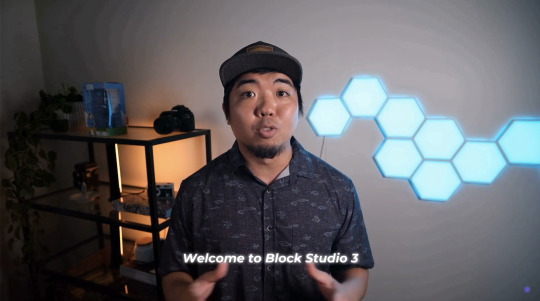
Sean Watase, founder of Blockstudio3 and developer relations lead at Thirdweb, has been holding court in the #ai channel on Hawaii Slack. Recently, he posted his current set of preferred AI tools for content creation and business automation! Check out the list: https://blog.hawaiian.ai/2024/02/17/sean-watases-ai-toolbox/
#ai#artificial intelligence#ai hawaii#hawaii ai#aihawaii#hawaiiai#content creation#business automation
0 notes
Text

"He look at me with love."
~ Sam
#me#barbie girl#child of paradise#flower child#spirituality of the eternal child of paradise#childhood dreams#fairytaleliving#my photos#artist#paradise#palm trees#beaches#sunrise#hawaii#wild child#never let me go#cute baby#god's creation#god's blessings
1 note
·
View note
Text
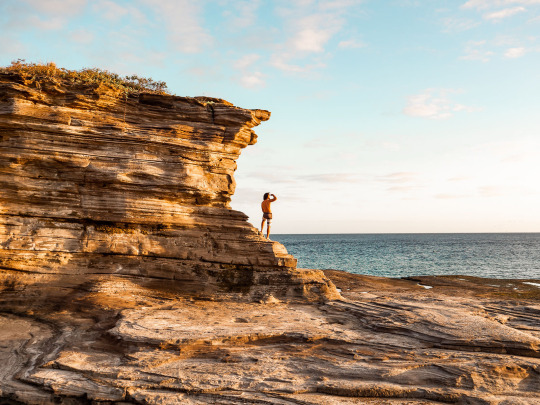
If you’re a in the personal fitness industry it’s vital relate to a specific audience.
What are you doing to stand out amongst every other “gym photo” on your timeline.
Better yet, how does your audience recognize you?
#personal fitness trainer#content creation#personal photographer#travel Hawaii#male model#fitness photography
1 note
·
View note
Text
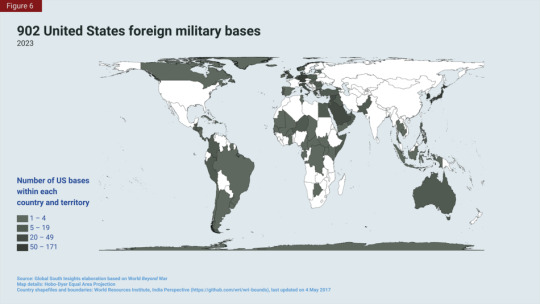
"In the twenty-first century, nothing is more indicative of U.S. empire than the global reach of the U.S. military. Much of this power comes from its approximately 800 military bases located in around eighty countries, accounting for about 95 percent of the world’s foreign military bases. No other country comes close to the U.S. level of worldwide military control. ... The United States probably has more military bases than any other empire in history, yet most Americans remain largely ignorant of their numbers and location. The history of these bases is an imperial history, tied to war, occupation, and military expansion. Wherever the U.S. military has gone bases have usually followed, giving the United States an ongoing presence long after the war or occupation is over.
The creation of bases has accompanied each wave of U.S. expansion. Military forts enabled continental conquest—255 in total—which functioned as foreign bases on land that was often still controlled by Native peoples. These forts operated as the military outposts of settler-colonialism and were targeted by Native peoples as violations of territorial integrity. The War of 1898 and subsequent occupation of overseas colonies resulted in a global basing system, and by 1938 the United States had fourteen military bases outside its continental borders in Puerto Rico, Cuba, Panama, the Virgin Islands, Hawaii, Midway, Wake, Guam, the Philippines, Shanghai, the Aleutians, American Samoa, and Johnston Island. ... The explosion of foreign bases during World War II would be followed by surges during the Korean War, the War in Vietnam, and the Wars in Afghanistan and Iraq, showing that wars and occupations continue to expand U.S. territory, even if the form of those acquisitions has shifted since the days of settler-colonialism and annexation. The contemporary number, which hovers around 800 to 900, is still an impressive network that places the military within striking distance of every spot on the globe. Historian Bruce Cumings calls the modern form of U.S. empire an 'archipelago empire,' small islands of U.S. control from which power can be projected anywhere in the world. It has become increasingly difficult to tell where the boundaries of the United States begin and where they end.
... For most U.S. citizens these bases are either invisible or accepted as a natural part of our national security apparatus. David Vine argues that Americans 'consider the situation normal and accept that US military installations exist in staggering numbers in other countries, on other peoples’ land. On the other hand, the idea that there would be foreign bases on US soil is unthinkable.'"
Stefan Aune, "American Empire," in At War: The Military and American Culture in the Twentieth Century and Beyond, 2018
Map source
650 notes
·
View notes
Text

Bodyguard13: A great Hawaii con with these critters thx @creationent for a great event
199 notes
·
View notes
Text
In the late 18th century, [...] Lahaina carried such an abundance of water that early explorers reportedly anointed it “Venice of the Pacific”. A glut of natural wetlands nourished breadfruit trees, extensive taro terraces and fishponds that sustained wildlife and generations of Native Hawaiian families.
But more than a century and a half of plantation agriculture, driven by American and European colonists, have depleted Lahaina’s streams and turned biodiverse food forests into tinderboxes. Today, Hawaii spends $3bn a year importing up to 90% of its food. This altered ecology, experts say, gave rise to the 8 August blaze that decimated the historic west Maui town and killed more than 111 people.
“The rise of plantation capital spawned the drying of the west side of Maui,” said Kamana Beamer, a historian and a former member of the Hawaii commission on water resource management [...].
---
[S]ugar and pineapple white magnates began arriving on the islands in the early 1800s. For much of the next two centuries, Maui-based plantation owners like Alexander & Baldwin and Maui Land & Pineapple Company reaped enormous fortunes, uprooting native trees and extracting billions of gallons of water from streams to grow their thirsty crops. (Annual sugar cane production averaged 1m tons until the mid-1980s; a pound of sugar requires 2,000lb of freshwater to produce.)
Invasive plants that were introduced as livestock forage, like guinea grass, now cover a quarter of Hawaii’s surface area. The extensive use of pesticides on Maui’s pineapple fields poisoned nearby water wells. The dawn of large-scale agriculture dramatically changed land practices in Maui, where natural resources no longer served as a mode of food production or a habitat for birds but a means of generating fast cash, said Lucienne de Naie, an east Maui historian [...].
“The land was turned from this fertile plain – with these big healthy trees, wetland taros and dryland crops like banana and breadfruit – to a mass of monoculture: to rows and rows of sugar cane, and rows and rows of pineapple,” she said.
---
The Great Māhele of 1848, a ground-breaking law that legitimized private land ownership, laid the ground for big developers to hoard water for profit, said Jonathan Likeke Scheuer, a water policy consultant and co-author of the book Water and Power in West Maui. [...] [T]he creation of private property allowed agricultural corporations to wield “political and ultimately oligarchic power” over elected officials. In 1893, a group of sugar magnates and capitalists overthrew the Hawaiian Kingdom’s Queen Liliuokalani, paving the way for the US to annex Hawaii five years later. Sanford Ballard Dole, a cousin of Dole Plantation’s founder, served as the first governor of Hawaii.
When the last of the sugar companies closed in 2016 [...], Scheuer said, the farms were purchased by large investors for real estate speculation and left fallow, overrun with invasive grasses that became fuel for brush fires. Developers [...] took control of the plantations’ century-old irrigation ditches and diverted water to service its luxury subdivisions. In doing so, it left scraps for Indigenous families who lived downstream. [...] [O]n Maui, 16 of the top 20 water users are resorts, time-shares and short-term condominium rentals equipped with emerald golf courses and glittering pools [...].
---
Text by: Claire Wang. "How 19th-century pineapple plantations turned Maui into a tinderbox". The Guardian. 27 August 2023. [Bold emphasis and some paragraph breaks/contractions added by me.]
270 notes
·
View notes
Text
A writer’s guide to forests: woodlands made by man
Forests are for the most part, the realm of nature. But what about those with a less than natural origin? Here are some woodlands that are shaped artificially.
Parks and gardens- Trees look nice, there’s no denying it. As long as there have been people who admire trees, there have been gardens and parks. Grassy meadows, neatly trimmed hedges and flower beds may get all the attention, but an accenting grove, or a rambling woodland always adds to the aesthetic. Wealthy aristocrats would import trees from far away places, while more modest landowners and public spaces grow native species. Though the results do look quite natural, they are nonetheless human creations.
Orchard- Fruit and nut bearing trees have always been favored as a reliable source of food. And so people since nearly the beginning of agriculture have been planting orchards to provide for them. Trees are planted in rows, evenly spaced apart for the ease of harvesting. Smaller orchards, those catering to families who pick their own fruit, and those that grow fairly delicate fruits still do the harvesting by hand, while many more rely on machines to do the heavy lifting.
Tree farm/ plantation- Many trees types cultivated are deciduous species, but there are some instances when conifers are preferred. Being relatively fast growing, and usually possessing a single, straight trunk, they are the ideal tree type for use as lumber and paper products. Of course, one cannot forget the need every November and December for Christmas trees.
Palm plantation- The tropics are ideal for growing oil palms. Thousands of acres are devoted to the tree, as so much of our food and other products these days relies on palm oil. This is not a good thing as the demand means that vast areas of rainforest have had to be cleared. In Indonesia, the problem is particularly evident, as the growth of palm plantations is one of the main factors behind the decline of orangutan numbers.
Coconut grove- Almost anywhere you go in the tropics will have coconut palms. Buoyant, the nut floats easily on the currents, and where it is too isolated for a coconut to reach naturally (such as Hawaii), people have brought it with them. As well as the coconuts, the palms themsevles are also used; palm fronds can be used for roofing, and the fibers are used in weaving.
Bonsai forest- The art of growing miniature trees has been practiced for centuries. Some trees are collected in the wild, harsh natural conditions causing the trees to grow slowly and stay small, but many more are shaped over many years. While many bonsai are grown singularly, groves and forests are also popular choices. These can be either monospecific, or mixed, and can be part of a larger landscape creation that includes rocks, water, and figures.
There are plenty of examples of forest areas that are man-made. Don’t feel like you have to confine your story to a natural woodland. Use what you find around you to inspire the setting and drive your characters and the plot. What happens on the earth can easily be applied to science fiction or fantasy. Put your own spin on it (maybe your characters are small and live in a bonsai forest…of course they could also be normal sized people who happen to be in a giant sized bonsai planting).
Edit: As pointed out in the comments/reblogs, I seemed to have forgotten woodlots, so I am going to include those.
Woodlot- Common areas open to members of the community include a mixture of open pastureland and forested areas. People would have their flocks and herds forage here in spring and summer, whilst they managed and harvested the trees. Trees in woodlots would not be felled, instead the branches would be cut back and allowed to regrow. The resulting growth produces straight branches that are used in constructing walls, fences, as well as firewood and charcoal. (Communal pastures and woodlots are not really thought of these days, as many areas were lost over the years due to industrialization, urbanization, and the enclosure of land by the aristocracy)
#writing#creative writing#writing guide#writing inspiration#writing prompts#worldbuilding#writer#writers#writers and poets#writing community#writer on tumblr#writeblr
56 notes
·
View notes